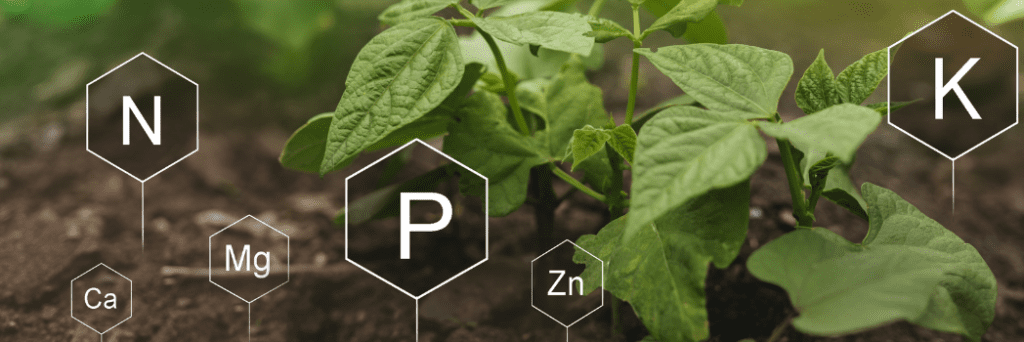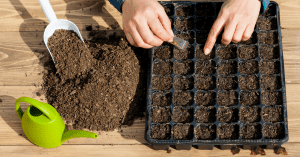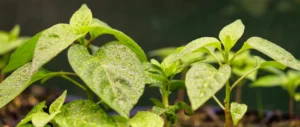Grow Bigger, Healthier Chili Plants!

Did you know that pH (the measure of alkalinity or acidity) plays a key role in the development of your chili plants? Read on to find out the best soil pH for growing chili peppers.
The fact is: if poorly managed, pH could play a large role in the death or underperformance of your plants. Controlling pH can be vital if you want to optimize the growth and yields of your chilies.
Ever wondered why despite feeding your chili plants all the right things, watering at the right times, and keeping temperatures and humidity at optimal levels, your plants just aren’t all that big or are showing signs of nutrient deficiencies? Well, you might have a pH problem, pH affects the availability of nutrients your plant has access to.
Key Takeaways
- Chili peppers grow best in soils with a pH range of 6.0 to 7.0, with a slightly acidic environment being preferred.
- Maintaining the correct soil pH allows for optimal nutrient absorption, leading to healthy plant growth and abundant yields of flavourful chilis.
- Regularly testing and adjusting soil pH is important for maximizing chili pepper growth and development, using methods such as adding lime to raise pH or elemental sulphur to lower it.
- Consistently monitoring and maintaining the proper pH levels throughout the growing season is crucial for avoiding nutrient deficiencies and common issues like stunted growth or poor fruit development in chili plants.
Explore this Topic
Acidity? Alkaline? Understanding the Importance of pH for Growing Chili Peppers
The pH level of the soil is crucial for the optimal growth and development of chili peppers, as it affects their nutrient absorption and overall health. For your convenience I have put some affiliate links to a few pH meters you can purchase below if you don’t already have one, in addition, there is a video covering this topic.
- pH meter I use: https://geni.us/Apera_ph
- cheaper pH meters: https://geni.us/phmeter
- soil pH meter: https://geni.us/soilphmeter
Do all Chili Peppers Need the Same pH Range?
No, not all chili peppers require the same pH range. Different varieties of chili peppers have varying pH requirements for optimal growth. Some chili peppers prefer acidic soil with a pH range of 5.5 to 6.5, while others can tolerate a wider pH range, such as 6.0 to 7.5. It is important to research the specific pH requirements for the chili pepper variety you are growing to ensure optimal growth and fruit production.
Ideal pH Range for Chili Pepper Plants.
We all understand the important role using the best soil plays in their growth. Yet few realize that it’s not just the composition but also the acidity or alkalinity – known as pH level – of the soil that matters immensely.
So what is this sweet spot for our chili plants? The ideal soil pH range lies between 6.0 to 7.0.
Impact of pH on Plant Growth and Development
Understanding the pH levels in your soil is vital when it comes to the growth and development of chili plants. Each plant species, including peppers, has a unique range where they best absorb nutrients from the soil.
When we maintain our chili pepper plants within their ideal pH range (6.0 to 7.0), they can efficiently access all necessary nutrients such as nitrogen, phosphorus, and potassium for their optimal development.

Having correctly balanced pH levels allows pepper plants grow at their best rate while also enhancing nutrient uptake, boosting overall health and produce quality chilis with rich flavours.
Conversely, extreme acidity or alkalinity may hinder nutrient availability leading to problems like stunted growth and lesser yields. Hence adjusting your soil’s pH to suit your chili pepper’s requirements should be one of your priorities in gardening.
Methods for Adjusting Your Soil pH
To adjust the pH of soil for growing chili peppers, there are a few methods you can use. One common method is adding lime to raise the pH if it is too acidic. Lime contains calcium carbonate, which neutralizes acidity in the soil and raises the pH level.
Another option is to use elemental sulphur to lower the pH if it is too alkaline. Elemental sulphur reacts with bacteria in the soil to create sulfuric acid, which lowers the pH level.
It’s important to note that adjusting soil pH takes time, so be patient and monitor your plants closely as you make changes. Also, keep in mind that different soils may require different amounts of amendments to achieve the desired pH range for chili pepper growth and development.
Maintaining Optimal pH Levels throughout the Growing Season
Throughout the growing season, it is crucial to regularly monitor and adjust the pH levels of your soil for optimal growth and development of chili peppers.
Regular Monitoring and Adjustments: Test Your Soil!
Regular monitoring and adjustments play a crucial role in ensuring the optimal growth and yield of chili peppers. By regularly checking the pH levels of your soil, you can make necessary adjustments to create the ideal growing conditions for your plants.
This is important because pH levels significantly impact chili plant development and nutrient availability. By maintaining the right pH range, usually between 5.4 to 6.8 for maximum chili pepper growth, you can ensure that your plants receive the nutrients they need to thrive.
Monitoring and adjusting pH levels throughout the growing season allows you to maintain these optimal conditions and maximize your chili pepper harvest.
Importance of Consistent pH Levels
Maintaining consistent pH levels throughout the growing season is crucial for the health and success of your chili pepper plants. The pH level directly affects nutrient availability in the soil, which in turn impacts plant growth and productivity.
When the pH level is too high or too low, essential nutrients may become locked up in the soil, making them unavailable to your plants. This can lead to stunted growth, nutrient deficiencies, and poor fruit development.
By regularly monitoring and adjusting the pH levels of your soil, you ensure that your chili peppers have access to all the nutrients they need for optimal growth and yield. So remember, maintaining consistent pH levels is key to a thriving garden full of robust chili pepper plants.
Common pH-Related Problems and Solutions
Common pH-related problems can occur when growing chili peppers, such as nutrient deficiencies and imbalances that affect plant health and productivity. To address these issues, it is essential to regularly monitor soil pH levels and make necessary adjustments using recommended methods like adding sulphur or lime to raise or lower the pH accordingly.
pH-related Plant Issues
Maintaining the proper pH levels in your soil is crucial for healthy chili pepper plants. If the pH is too high or too low, it can lead to a variety of plant issues. For example, if the pH is too low (acidic), chili plants may struggle to absorb essential nutrients like phosphorus and magnesium.
This can result in stunted growth, yellowing leaves, and poor fruit development.
On the other hand, if the pH is too high (alkaline), it can cause nutrient deficiencies such as iron and manganese. This can manifest as yellowing between leaf veins, also known as chlorosis.
Additionally, extremely alkaline conditions can inhibit root development and impair water uptake.
How to Address pH-related Problems
To address pH-related problems in your chili pepper plants, it’s important to regularly test and monitor the pH levels of your soil. If you find that the pH is too high or alkaline, you can lower it by adding elemental sulphur or aluminium sulphate to gradually decrease the pH.
On the other hand, if your soil is too acidic, you can raise the pH by adding lime or crushed oyster shells. Additionally, incorporating organic matter such as compost or rotted manure into the soil can help improve overall soil quality and buffer any extreme pH fluctuations.
By maintaining optimal pH levels throughout the growing season and addressing any imbalances promptly, you can ensure that your chili peppers receive the necessary nutrients for healthy growth and abundant yields.
Conclusion to the Best Soil pH for Growing Chili Peppers
In conclusion, understanding and managing the pH levels of your soil is crucial for successfully growing chili peppers. By maintaining the ideal pH range of 6.0 to 7.0, you ensure that your plants can absorb essential nutrients and thrive.
Don’t overlook the importance of pH in maximizing yields and keeping your chili plants healthy and productive!
FAQs
1. Why is pH Important for Growing Chili Peppers?
pH is important for growing chili peppers because it affects the availability of essential nutrients in the soil. Different plants have different pH preferences, and maintaining the correct pH level ensures that chili pepper plants can absorb nutrients efficiently.
2. What is the Ideal pH Range for Growing Chili Peppers?
The ideal pH range for growing chili peppers is between 6 and 7. Chili pepper plants prefer slightly acidic to neutral soil conditions to thrive and take up nutrients effectively.
3. How can I Test the pH of my Soil for Growing Chili Peppers?
You can test the pH of your soil by using a soil testing kit or sending a sample to a professional laboratory for analysis. These tests will provide you with accurate information about your soil’s current pH level.
4. How can I Adjust the pH of My Soil if it’s Not Suitable for Growing Chili Peppers?
If your soil’s pH is not suitable for growing chili peppers, you can make adjustments by adding amendments such as lime to raise the pH or sulfur to lower it. It’s important to follow recommended guidelines and monitor changes in pH levels over time to ensure optimal conditions for your plants’ growth.





Sir can u guide on alkaline and acidic like how to lower alkaline
Thank u sir
You can use something called pH Down. Or if you can’t get that, then just use some lemon juice. Make sure you don’t add too much (test the pH after adding)
You can use sparkling mineral water. Which has a slightly acidic ph and actually is very good for chillies. I just discovered this hack during the current year and I have the healthiest chillies I ever had. The key, like with anything in life, is moderation.